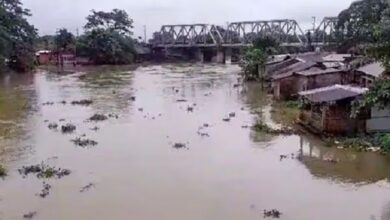Climate Finance Landscape of Asia and the Pacific
the United Nations Framework Convention on Climate Change (UNFCCC) and the Paris Agreement. Some countries recently updated their NDCs to reflect more ambitious climate targets.

Executive Summary
Climate change is a major concern for Asia and the Pacific. This region, where developing countries most vulnerable to the impact of climate change are located, is the biggest contributor to greenhouse gas (GHG) emissions: it is responsible for over half of global emissions.
Various e®orts and measures have been taken at the national, regional, and global levels by Asia and Pacific countries in response to climate change impact, as shown in their Nationally Determined Contributions (NDCs) and their participation in the United Nations Framework Convention on Climate Change (UNFCCC) and the Paris Agreement. Some countries recently updated their NDCs to reflect more ambitious climate targets.
Developing countries also conveyed the message that those targets would not be achieved through their own e®orts alone, and that they would need international assistance to mobilize and scale up finance toward low-carbon transition and climate-resilient development.
Given the urgency of meeting the goals of the Paris Agreement, this report seeks to enhance the knowledge base, and to support the developing countries of the Asian Development Bank (ADB) in expanding climate change action, through a quantitative and qualitative assessment of the climate finance landscape of Asia and the Pacific, as well as in-depth regional analyses of its five subregions: Central and West Asia, East Asia, South Asia, Southeast Asia, and the Pacific. The report uses data from 2018–2019 and includes an overview of the impact of the coronavirus disease (COVID-19) pandemic on finance flows in 2020, based on the Climate Policy Initiative’s Global Landscape of Climate Finance (CPI 2019a, 2020, 2021) and national tracking initiatives such as India’s Landscape of Green Finance, Indonesia’s Landscape of Private Climate Finance, and the Landscape of Climate Finance of the People’s Republic of China (PRC).
The report has the following sections:
Section 1: Background and context on the importance of understanding climate finance flows in Asia and the Pacific, particularly in relation to the Paris Agreement.
Section 2: Methods and approaches used in assessing the climate finance landscape of Asia and the Pacific, covering mitigation, adaptation, and dual-benefit financing. The assessment is based on 2018–2019 data from the CPI’s Global Landscape of Climate Finance (CPI 2019a), including sources of climate finance and types of recipients.
Section 3: Climate finance landscape of Asia and the Pacific, which contains an assessment of financing according to source (public vs. private), uses and sectors (mitigation vs. adaptation), instruments (debt vs. equity), and geographic flow (final destination of climate finance), as well as a discussion on key challenges and opportunities in mobilizing climate finance in Asia and the Pacific.
Section 4: Climate finance landscape of the five subregions of Asia and the Pacific. A subsection for each subregion (i) describes and gives an overview of the subregional context; (ii) assesses the climate finance landscape and key financing highlights and features; (iii) identifies challenges and opportunities to narrow the finance gap, which could lead to scaled-up financing; and (iv) highlights practices and lessons learned in managing climate finance, through case studies on selected countries.




